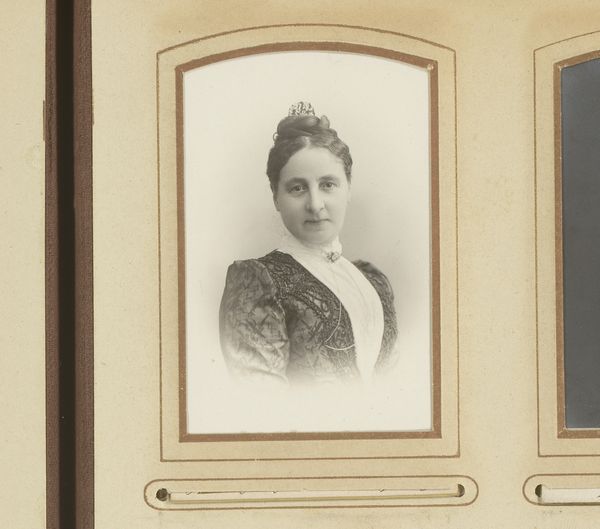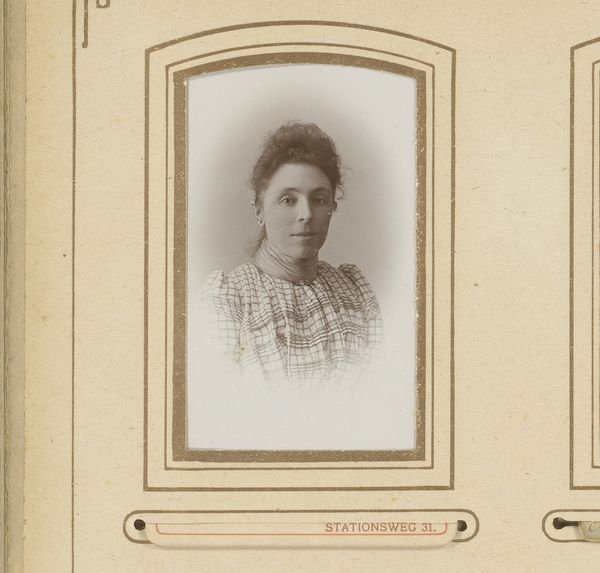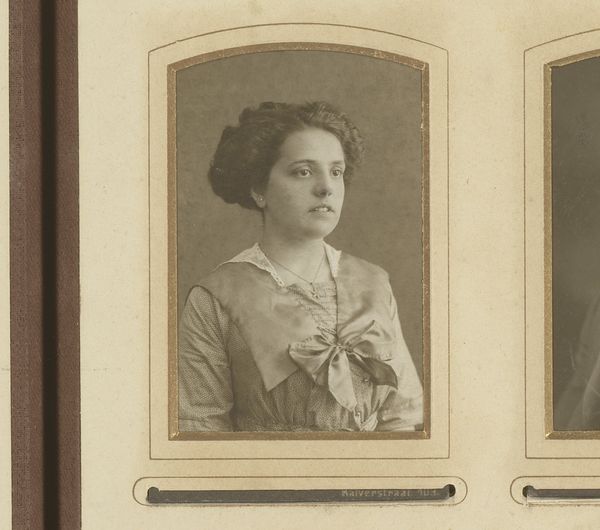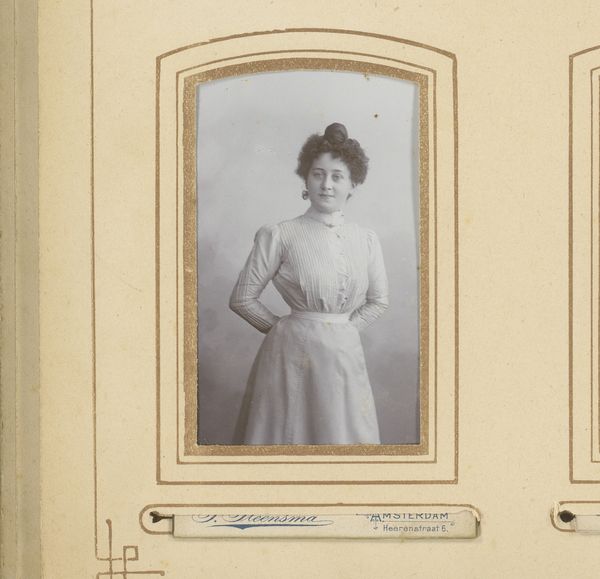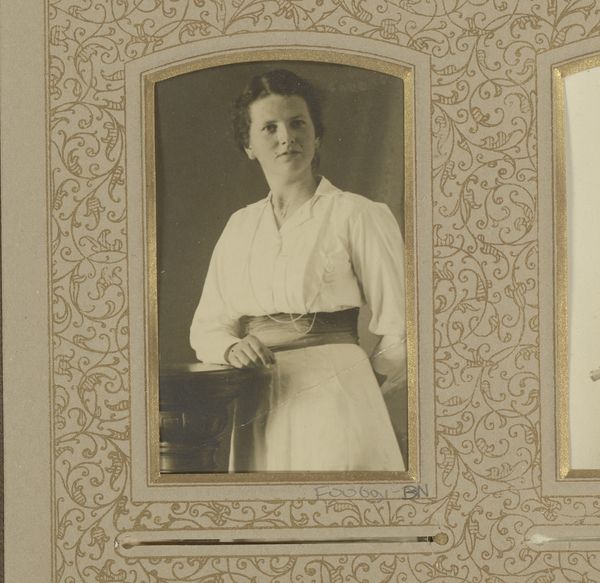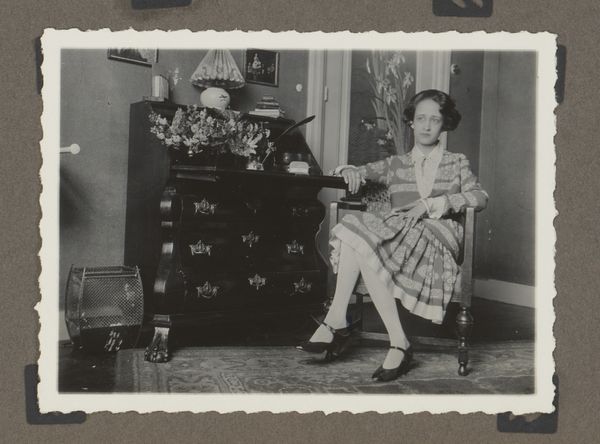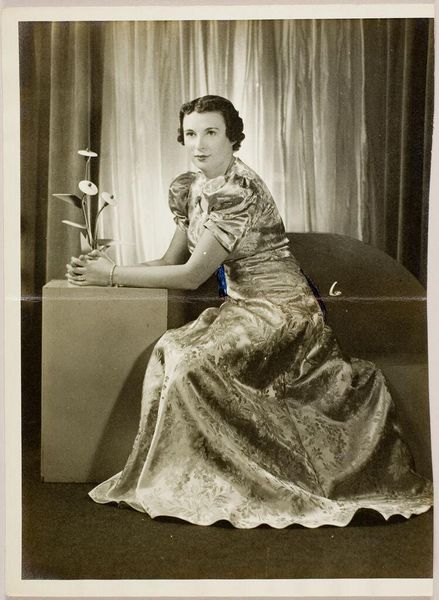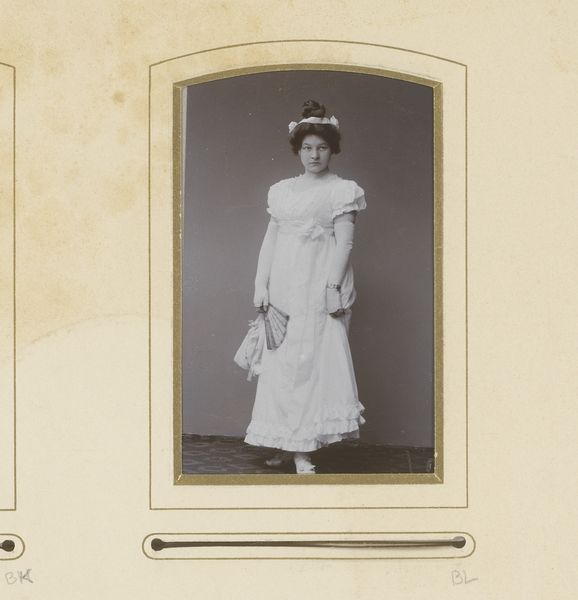
#
street shot
#
portrait subject
#
candid portrait
#
crowd photography
#
populated photography not posed
#
person communication photography
#
street photography
#
person photography
#
portrait character photography
#
portrait photography
Dimensions: image: 40.64 × 49.53 cm (16 × 19 1/2 in.) sheet: 58.42 × 67.31 cm (23 × 26 1/2 in.)
Copyright: National Gallery of Art: CC0 1.0
Curator: This arresting photograph by Leo Rubinfien is titled "Jerusalem, 2005, on Jaffa Street" and was likely captured sometime between 2005 and 2014. Editor: Immediately, I'm struck by the textures here – the smoothness of her skin against the hard, geometric punch-outs of that vibrant green metal. It creates an odd tension, almost a sense of entrapment. Curator: Notice how her gold jewelry mimics, in miniature, the perforated metal. Gold has held powerful symbolism in Jerusalem for millennia, representing not just wealth but also spiritual purity. Editor: And what about the chain of what appear to be gold coins around her neck? The mass production of coinage facilitated trade and the growth of cities, connecting people and economies across vast distances. How is this woman situated in the currents of her society and economy? Curator: Intriguingly, each coin is imprinted with an image that carries its own weight. Perhaps this woman wears this coinage, as a talisman, warding off trouble and invoking divine blessing. The choice of those particular icons would be key. Editor: It also raises the question of the materials themselves. What gives the fence that incredible green? How available were these materials and this paint at the time the picture was taken, and what choices went into using it as part of the built landscape? The color reads like something not quite natural, creating an intriguing juxtaposition to the human subject. Curator: The urban backdrop also prompts reflection on the contested terrain of Jerusalem, and the material presence of that painted wall on the left may be communicating even more. The blurred and indistinct face could represent lost memories or marginalized voices, in the context of an active and layered society. Editor: Absolutely. The photograph reveals how individual identities are constantly shaped by their relationship to larger social and economic structures. Consider also how the photographer and his equipment at that moment in time were capable of creating a portrait such as this. Curator: Looking closer at the composition, I see how Rubinfien positions her leaning against this hard barrier. It suggests resilience but also perhaps weariness – a poignant interplay. Thank you for drawing out those nuances. Editor: And thank you for providing some context and possible symbolic readings. It's important to think about how material culture informs social meanings and even identities, too.
Comments
No comments
Be the first to comment and join the conversation on the ultimate creative platform.

